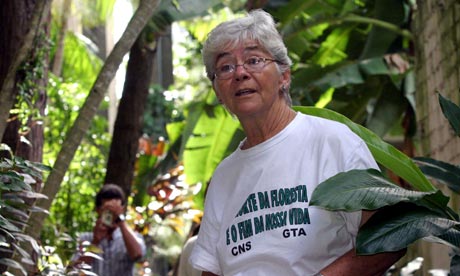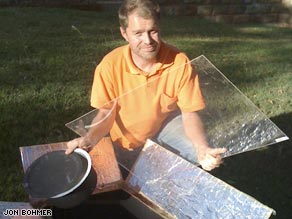By
John Johnson Jr. Rising over the battered surface of the moon, Earth loomed in a shimmering arc covered in a swirling skin of clouds.
The image, taken in 1966 by NASA's robotic probe Lunar Orbiter 1, presented a stunning juxtaposition of planet and moon that no earthling had ever seen before.
It was dubbed the Picture of the Century. "The most beautiful thing I'd ever seen," remembered Keith Cowing, who saw it as an 11-year-old and credited it with eventually luring him to work for NASA.
But in the mad rush of discovery, even the breathtaking can get mislaid.
NASA was so preoccupied with getting an astronaut to the moon ahead of the Soviets that little attention was paid to the mountains of scientific data that flowed back to Earth from its early space missions. The data, stored on miles of fragile tapes, grew into mountains that were packed up and sent to a government warehouse with crates of other stuff.
And so they eventually came to the attention of Nancy Evans, a no-nonsense woman with flaming red hair that fit her sometimes-impatient nature. She had been trained as a biologist, but within the sprawling space agency she had found her niche as an archivist.
Evans was at her desk in the 1970s when a clerk walked into her office, asking what he should do with a truck-sized heap of data tapes that had been released from storage.
"What do you usually do with things like that?" she asked.
"We usually destroy them," he replied.
Workhorse missions
If there is an unsung hero of the moon race, it is the Lunar Orbiter program of 1966 and 1967. There were five unmanned spacecraft, resembling stubby candleholders with 12-foot-diameter solar arrays at their bases.
On board each were two large telescopes that could focus on objects as small as a yard, along with specially built Kodak cameras using 70-millimeter film. An on-board darkroom developed the lunar images and prepared them for transmission back to Earth.
Their mission was to map the entire surface of the moon in preparation for the Apollo landings -- and all five performed magnificently.
Incidental to its mission, Lunar Orbiter 1 took the first pictures of Earth as a full planet. Taken pre-Summer of Love, pre-Watergate, pre-global warming, it was a family photo of a less-stressed home planet.
Altogether, nearly 2,000 frames were photographed by the five missions, each of which ended with a silent crash onto the lunar surface.
But there was a problem. Although the original high-resolution images were saved on 2-inch-wide tape, those pictures weren't seen by the public. The images that scrolled across television screens and appeared on the front pages of newspapers were snapshots of the originals using standard 35-millimeter film. The images were grainy and washed-out, like a poorly tuned television set.
Still, they inspired wonder as humanity for the first time contemplated the surface of another body in space from a front-row seat. In addition to the famous image of Earth, there were pictures of the giant Copernicus crater, the 800-million-year-old impact crater more than two miles deep and 60 miles across.
It was a short-lived moment of glory for the workhorse missions. Two years after the last one, Apollo astronaut Neil Armstrong stepped onto the surface of the moon. With him was a high-resolution Westinghouse TV camera and three exotic Hasselblad still cameras, among other equipment.
The images the astronauts took easily surpassed the Lunar Orbiter shots. But even they eventually migrated into the realm of the ho-hum as the world was inundated with images of moon buggies, lunar golf and the satellite's monotonously barren surface.
By the time of the final Apollo mission in 1972, the American public and Congress had begun to lose interest.
Evans wasn't particularly interested in the moon either when she went to work the next year for the Jet Propulsion Laboratory in La Cañada Flintridge.
The daughter of a Colorado physician, she had trained in anatomy and the biological sciences. Her bosses saw something in the determined young woman that made them think she would be perfect for a new job in Washington: straightening out NASA's archives. The mountains of data from the early Mercury, Mariner and Gemini missions had become a jumbled mess.
Evans turned out to be the perfect choice. She was organized and could take care of herself. She knew her mission: to preserve the history of human space exploration.
When the clerk came in to ask about the Lunar Orbiter tapes, she didn't hesitate.
"Do not destroy those tapes," Evans commanded.
She talked her bosses at JPL into storing them in a lab warehouse. "I could not morally get rid of this stuff," said Evans, 71, in an interview at her Sun Valley home.
She had no idea what she was letting herself in for. The full collection of Lunar Orbiter data amounted to 2,500 tapes. Assembled on pallets, they constituted an imposing monolith 10 feet wide, 20 feet long and 6 feet high.
The mountain of tapes was just part of Evans' new burden.
There was no point, she realized, in preserving the tapes unless she also had an FR-900 Ampex tape drive to read them. But only a few dozen of the machines had been made for the military. The $330,000 tape drives were electronic behemoths, each 7 feet tall and weighing nearly a ton.
Evans scoured salvage lists for a castoff FR-900. As a member of the federal government's Trash Evaluation Board, she was privy to everything being thrown away from government institutions.
One day in the late 1980s, she got a call from Eglin Air Force Base in Florida: "We heard you're looking for FR-900s. We've got three of them. Where do you want us to send them?"
Having already stretched her bosses' goodwill at JPL by storing the tapes there, she reluctantly agreed to take the drives herself. Evans stored the three tape drives from Eglin and a fourth she got off a salvage list -- none of which worked -- in her own garage.
There they sat, for two decades.
"I was stuck with these drives," Evans said. "I couldn't get rid of them."
Space junkie's help
Evans applied regularly to NASA for funding to repair the drives. She was turned down every time. One NASA center estimated it would cost $6 million to restore the drives and digitize the tapes.
Finally, in 2005, retired and increasingly doubtful that the historic images would ever see the light of day, Evans gave up on NASA and went public.
She submitted a paper to a lunar conference stating her plight. Her plea ended up on a blog frequented by space buffs, where it caught the attention of Dennis Wingo, a kind of space junkie extraordinaire.
Author, designer and dreamer, Wingo is well-known in the private space world, the community of activists trying to show that private enterprise can explore space more effectively and cheaply than the government.
"I have been working in lunar exploration for 20 years," Wingo said. "I knew the value of the tape drives and the tapes."
Wingo went for a second opinion from his friend Keith Cowing, who worked for NASA for several years and now operates the NASA Watch website, which frequently aims slings and arrows at space agency administrators. Cowing agreed that they had stumbled on a treasure trove of space history.
One evening in April 2007, he and Wingo pulled up to Evans' home with two rented trucks and loaded up the dirty, dusty and broken FR-900s.
Three hundred miles later, they pulled up to the gate at Ames Research Center in Mountain View, probably the only NASA institution that would even consider admitting them and their pile of junk.
Ames Director Pete Worden offered space in an abandoned McDonald's that in the heyday of the lunar program had been called "McMoon's."
The tape drives were installed where customers once ate fries. Behind the counter, where employees had flipped burgers, stood the massive wall of tapes.
Wingo, who has an engineering physics degree from the University of Alabama, knows his way around a computer. But repairing the FR-900s was beyond him. It was also beyond almost everyone else they tried.
Finally, they heard about an old Army vet, Ken Zin, who knew machinery and happened to work at Ames repairing video equipment.
Zin was a jack-of-all-trades who'd grown up on a farm in the Central Valley, repairing tractors and dairy equipment. In the Army, he'd graduated to fixing top-secret cryptograph machines. He sat down with Wingo and the rest of the team. "Can you make that thing run?" they asked him.
"Yeah, I can make it work," Zin replied.
A long rebuild
It turned out to be a lot harder than he expected. "I hadn't seen that type of stuff for 40 years," he said.
Wingo, Cowing and Zin worked into the night with student volunteers, cannibalizing the tape drives to get one machine working. "We felt a sense of urgency," said Greg Schmidt, deputy director of NASA's Lunar Science Institute at Ames.
They had managed to get $100,000 from NASA for their project, and decided they would focus their efforts on the Earthrise picture.
The drives kept breaking down. Rebuilding the demodulator that converted the electronic signals into images proved particularly difficult. When they couldn't find parts at warehouses, they dug through rusted rocket shells at Ames' junkyard to perform what Zin called a "wrecking yard rebuild."
They had been at work for three months when Schmidt got a call from Wingo one afternoon. "You'd better get over here."
After 42 years, Cowing gazed again at the image of Earth rising above the lunar landscape.
"When that picture came up, I had tears in my eyes," Cowing said.
Unlike the picture that the public had seen, this version had twice the resolution and four times the dynamic range.
It "was breathtaking," Schmidt said. "It felt like looking into the past."
Newly useful
The project has so far cost $250,000, far less than the $6-million estimate by NASA.
Having succeeded once, the team released its second image this weekend -- the Copernicus crater. The team eventually hopes to retrieve all 2,000 images from the five missions.
The images will be of more than historical interest. In April, NASA is scheduled to launch the Lunar Reconnaissance Orbiter to again map the moon. This time it will be looking for a site to erect a permanent human base.
By comparing the new images with the old ones, scientists will be able to study changes in the lunar surface. That information could be invaluable to colonists.
Schmidt flew Nancy Evans up for a small ceremony at Ames in November, when the first image was released.
To the old-timers at NASA, she was a heroine, the best example of a person who, in Schmidt's words, "goes far beyond her professional duties" in the name of science.
Evans herself was less impressed. "Anybody in the same place could have done this," she said.
john.johnson@latimes.com
Original here


 Aerosols can influence climate directly by either reflecting or absorbing the sun's radiation as it moves through the atmosphere. The tiny airborne particles enter the atmosphere from sources such as industrial pollution, volcanoes and residential cooking stoves. Credit: NASA Goddard's Scientific Visualization Studio
Aerosols can influence climate directly by either reflecting or absorbing the sun's radiation as it moves through the atmosphere. The tiny airborne particles enter the atmosphere from sources such as industrial pollution, volcanoes and residential cooking stoves. Credit: NASA Goddard's Scientific Visualization Studio Researchers used an electron microscope to capture these images of black carbon attached to sulfate particles. The spherical structures in image A are sulfates; the arrows point to smaller chains of black carbon. Black carbon is shown in detail in image B. Image C shows fly ash, a product of coal-combustion, that's often found in association with black carbon. While black carbon absorbs radiation and contributes to warming, sulfates reflect it and tend to cool Earth. Credit: Peter Buseck, Arizona State University
Researchers used an electron microscope to capture these images of black carbon attached to sulfate particles. The spherical structures in image A are sulfates; the arrows point to smaller chains of black carbon. Black carbon is shown in detail in image B. Image C shows fly ash, a product of coal-combustion, that's often found in association with black carbon. While black carbon absorbs radiation and contributes to warming, sulfates reflect it and tend to cool Earth. Credit: Peter Buseck, Arizona State University Since the 1890s, surface temperatures have risen faster in the Arctic than in other regions of the world. In part, these rapid changes could be due to changes in aerosol levels. Clean air regulations passed in the 1970s, for example, have likely accelerated warming by diminishing the cooling effect of sulfates. Credit: Drew Shindell, Goddard Institute for Space Studies
Since the 1890s, surface temperatures have risen faster in the Arctic than in other regions of the world. In part, these rapid changes could be due to changes in aerosol levels. Clean air regulations passed in the 1970s, for example, have likely accelerated warming by diminishing the cooling effect of sulfates. Credit: Drew Shindell, Goddard Institute for Space Studies



























